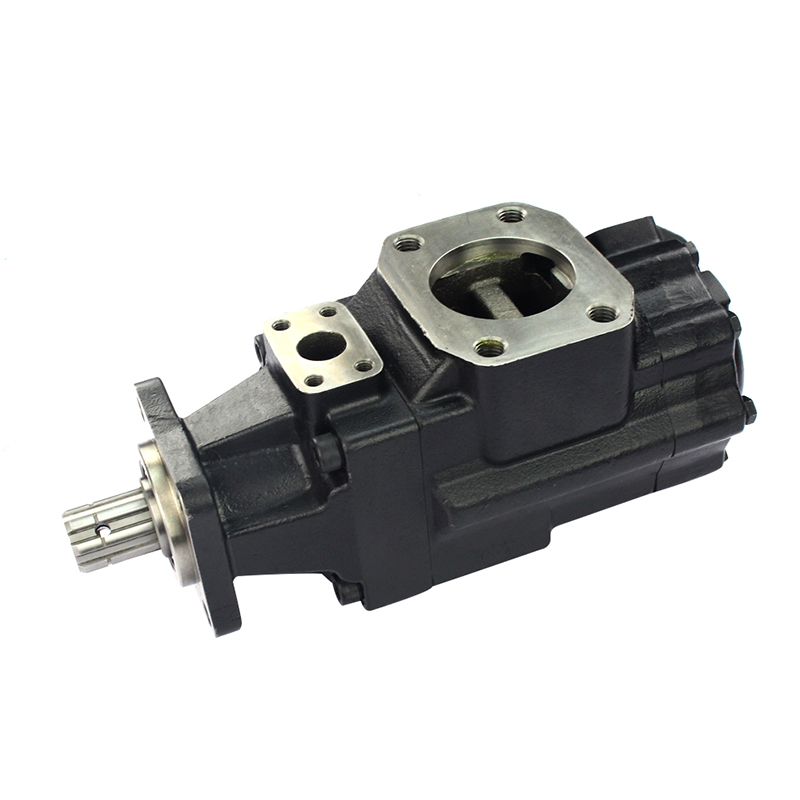Parker Denison vane pumps are widely recognized for their reliability, high performance, and efficiency in demanding hydraulic systems. Used in industries such as manufacturing, construction, marine, mining, and energy, these pumps are often a critical part of large-scale machinery. One of the most common questions engineers and maintenance professionals ask is:
“How long does a Parker Denison vane pump last?”
The life expectancy of a Parker Denison vane pump can vary based on usage, maintenance, operating conditions, and fluid quality. However, under proper working conditions, these pumps are engineered to last up to 10,000–20,000 hours or more.
1. Typical Life Expectancy: General Range
In standard applications, a well-maintained Parker Denison vane pump has a life expectancy of:
10,000 to 15,000 operating hours under moderate, continuous duty
20,000+ hours under ideal conditions with premium fluid, proper filtration, and correct system setup
Shorter lifespan (5,000–8,000 hours) if exposed to high pressure spikes, poor maintenance, or dirty fluids
This wide range reflects the fact that pump longevity is not fixed—it depends heavily on how the pump is used and maintained.
---
2. Key Factors That Influence Vane Pump Lifespan
a. Operating Pressure
Denison vane pumps are designed to operate at moderate to high pressure, depending on the model (e.g., T6, T7 series).
Running pumps consistently near their maximum rated pressure can lead to faster wear of vanes, seals, and bearings.
For longest life, it’s recommended to operate the pump at 75–85% of its maximum pressure rating.
b. Fluid Quality and Type
Hydraulic fluid cleanliness is a major factor.
Parker recommends using fluids with ISO 4406 cleanliness levels of 18/16/13 or better.
Contaminated or degraded oil can erode vane edges, clog filters, and damage internal components.
Always use the manufacturer-recommended oil viscosity and type (e.g., mineral-based, fire-resistant, or synthetic fluids).
c. Filtration System
A high-quality filtration system with return line and pressure filters will significantly extend pump life.
Poor filtration increases the risk of internal scoring, vane chipping, and excessive heat build-up.
d. Temperature Control
Excess heat is one of the main causes of reduced pump life.
Ideal oil temperature range: 35°C to 60°C (95°F to 140°F).
Operating above 70°C (158°F) for extended periods can degrade seals and fluids, shortening pump life drastically.
e. Proper Alignment and Mounting
Misalignment between the pump and motor shaft can lead to bearing failure and internal leakage.
Ensure proper installation and use flexible couplings where necessary.
f. Duty Cycle and Operating Hours
Pumps used intermittently in clean environments tend to last longer than those used in continuous or cyclic high-pressure operations.
Frequent start-stop cycles and reversing flows can also reduce service life.
---
3. Maintenance Practices to Extend Lifespan
To get the most out of your Parker Denison vane pump, follow these maintenance tips:
Regular oil changes: Every 2,000–3,000 hours or as recommended by oil analysis.
Filter replacements: Monitor pressure drop and replace when clogged.
Inspect for noise and vibration: Early signs of wear or misalignment.
Monitor system temperature and pressure: Use gauges and sensors.
Seal and gasket checks: Prevent leaks that lead to fluid loss and contamination.
Keep a service log: Track usage hours and maintenance actions for planning rebuilds or replacements.
With proper maintenance, many users report over 20,000 hours of service from a Parker Denison vane pump without needing a full rebuild.
---
4. Rebuilding vs. Replacing
Parker Denison pumps are designed for rebuildability. That means even after reaching the end of their service life, they can often be:
Re-sealed
Re-fitted with new vanes and bearings
Re-tested and reused
Rebuilding a vane pump is often more economical than full replacement, especially for high-end T6/T7 series pumps.
Rebuild intervals can be scheduled after 10,000 to 15,000 hours, depending on usage and condition.
---
5. Signs Your Pump May Be Reaching the End of Its Life
Unusual noise or vibration during operation
Reduced flow rate or pressure at normal RPM
Frequent seal or gasket leaks
Overheating or oil discoloration
Increased energy consumption (due to internal leakage)
If any of these signs appear, it may be time to evaluate whether a rebuild or replacement is needed.
---
So, what is the life expectancy of a Parker Denison vane pump?
Under normal conditions: 10,000–15,000 hours
Under optimal care and maintenance: 20,000+ hours
In harsh, neglected environments: as low as 5,000 hours
The actual lifespan depends on how well you manage pressure, fluid cleanliness, temperature, and maintenance routines. With Parker’s high-quality design and rebuild options, these pumps offer excellent return on investment when properly cared for.
If you need your system running reliably for years, investing time in proper installation and upkeep will pay off with longer pump life and reduced downtime.


 English
English русский
русский Español
Español عربى
عربى

